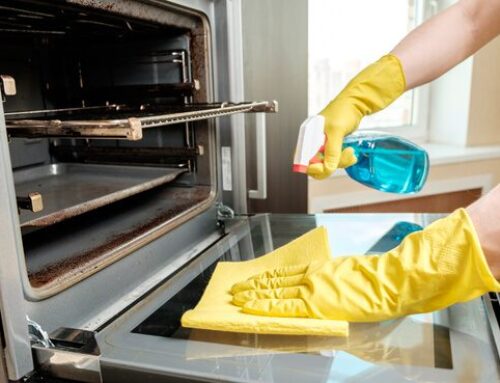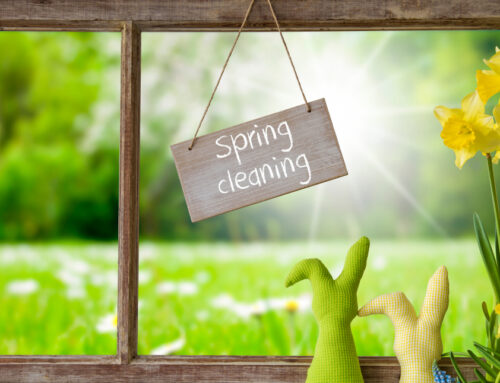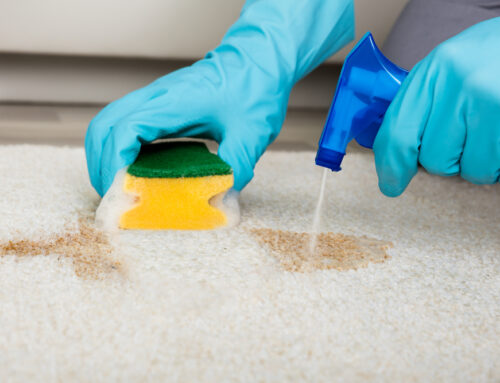Did you know that bacteria left on utensils can spread through food?
Sanitizing dishes reduces the risk of spreading foodborne illnesses and harmful bacteria. Washing the dishes may seem like a mindless task, but properly washing and sanitizing utensils can make a huge difference in your health.
Hand washing dishes can be a hassle, but having a system set in place can make the process quick and easy.
You can get clean and sanitized dishes without a dishwasher. If you’re interested in tips on how to hand wash dishes, keep reading!
Materials Needed
Before we begin with the process, let’s go over the materials needed. Gather these beforehand to save time.
- Sponge
- Dish soap
- Scrubber or steel wool
- Double sink or wash basin/pot
- Dish rack
- Towel
- Thermometer (optional, for sanitizing)
- Gloves (optional, some people prefer to wear gloves so they do not get their hands dirty)
For those of you who love jewelry, make sure to set aside any rings. You can put them back on once you’re done and wash your hands.
The Pre-Wash
The pre-wash consists of scraping leftover food and oil on your dishes. Your drain will thank you later. Grease and large chunks of food can cause clogging. Over time, it can build up and cause more serious issues long-term.
Have your trash bin handy by your side so you don’t have to walk back and forth. Get as much food off as you can and pour excess oil in your trash, as well.
Washing the Dishes
Now that our dishes are ready, it is time to wash. Having a system for washing can have you done in less than 30 minutes, especially with practice and repetition.
1. Fill the Sink
There are two main ways you can go about this. If you have a double sink, prepare and place all your dishes to one side. Use the other side to fill up with water and soap. Some of the best dish soaps include Dawn and Palmolive.
There are antibacterial soaps you can by, but they alone will not take care of sanitization. We will go over how to sanitize your dishes later.
If you do not have a double sink, select a basin or large pot to fill with warm water and soap. This can serve as your “soaking” station.
2. Soaking the Dishes
Stuck-on food can take up to 30 minutes to loosen. Make sure you leave time for this step. When soaking dishes, be sure that the water is a warm or hot temperature.
3. Order of Washing
As your dishes with stubborn messes are soaking, you can start washing some of the other dishes.
The order of washing should be from the least soiled to the most soiled. This way, the dishes that are most soiled have more time to soak. It is more efficient to work as you wait for those dishes because you’re not wasting time waiting.
Dishes like glasses, forks, and knives should be washed first. Choose your dishes from their soaking station or from the counter if you choose not to soak.
While washing, you may notice that your soaking station is getting grimy and mucky. Drain and replace the water as needed. You will also need to add more dish soap to your sponge as you go along the process.
Your most soiled dishes may need extra scrubbing. This is where your steel wool comes in.
Scrub with your steel wool to get hard stuck-on soil off of your dishes. Finish by scrubbing with your sponge and dish soap.
When you are done washing, place your dishes aside so they can be sanitized.
4. The Final Rinse
The final rinse will count as your sanitization. Once your sink is free of dishes, rinse out your basin or drain your soaking side. There are two ways you can sanitize with hot water.
The first way is to make the water as hot as possible and run your dishes under it for 30 seconds.
The second way is to refill your basin or sink with hot water. Use your thermometer to ensure that the water is at least 170°F.
It is up to personal preference on how specific you want to be when sanitizing. If you don’t want to measure the temperature of the hot water, that is fine.
5. Drying the Dishes
After rinsing your dishes in hot water, they will dry quicker. Use a towel to dry off your dishes if you’d like to put them away right after you’re done. But, you can also set them aside on the dish rack.
You can still dry off your dishes before putting them in the dish rack. This will prevent water marks from showing up.
It is recommended to use a lint-free towel to dry your dishes, especially your silverware.
The Aftermath
Now that you’re done hand washing your dishes, it’s time to clean your sink. Rinse the sides of your sink with water. Then, dump any excess food particles left in your drain strainer in the garbage.
Feel free to use all-purpose cleaner to scrub down your sink.
Professional Cleaning Services
Though it’s important to know how to properly hand wash dishes, it can take a lot of time and effort from your day. Hiring a professional cleaning service will allow you to spend more time doing what you want.
With a professional cleaning service, you wouldn’t have to buy any cleaning products, either. Also, other chores such as vacuuming and dusting would be done alongside dishes.
Knowing How to Hand Wash Dishes
Learning how to wash dishes is part of adulthood. Taking care of your space and regularly cleaning are important for your health and well-being. But sometimes, it may be hard to find time to do everything.
Hiring a cleaning service can help you keep your home clean and allow you more time to spend doing what you want.
If hiring a home cleaning service is something you’re considering, contact us for more information.






